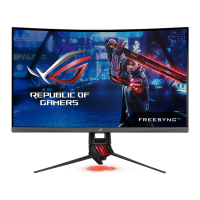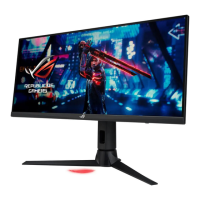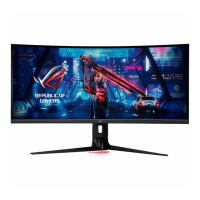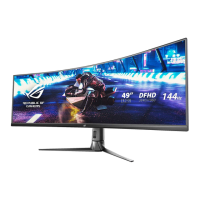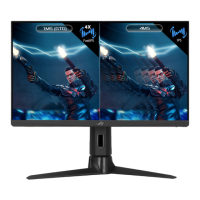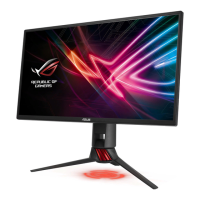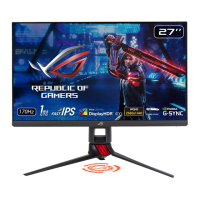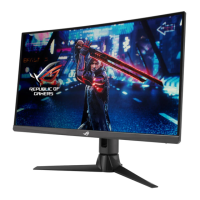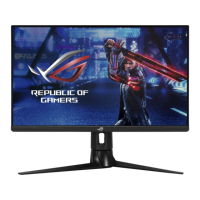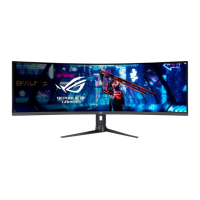Do you have a question about the Asus ROG STRIX XG32UQ and is the answer not in the manual?
Step-by-step instructions for attaching the monitor stand and base.
Guide on connecting various cables to the monitor ports.
Explanation of the monitor's control buttons and their functions.
Instructions for optimizing viewing comfort by adjusting monitor angle and height.
Procedure for removing the monitor stand for VESA wall mounting.
Overview of the On-Screen Display menu system.
Steps for changing settings within the OSD menu.
Detailed technical data and performance metrics for the monitor.
Common problems and their solutions for monitor issues.
| Color depth | 10 bit |
|---|---|
| Color gamut | 96 % |
| Pixel pitch | 0.1845 x 0.1845 mm |
| Screen shape | Flat |
| Backlight type | LED |
| Display diagonal | 32 \ |
| Anti-glare screen | Yes |
| Display technology | LCD |
| Native aspect ratio | 16:9 |
| Maximum refresh rate | 160 Hz |
| Viewable size, vertical | 398.52 mm |
| sRGB coverage (typical) | 130 % |
| Contrast ratio (dynamic) | 1000000:1 |
| Contrast ratio (typical) | 1000:1 |
| Display number of colors | 1.073 billion colors |
| Display brightness (peak) | 600 cd/m² |
| Viewable size, horizontal | 708.48 mm |
| Digital vertical frequency | 47 - 160 Hz |
| Digital horizontal frequency | 30 - 350 kHz |
| Display brightness (typical) | 450 cd/m² |
| High Dynamic Range (HDR) technology | DisplayHDR 600 |
| AMD FreeSync type | FreeSync Premium Pro |
| NVIDIA G-SYNC type | G-SYNC Compatible |
| Certification | TÜV Flicker-free TÜV Low Blue Light VESA DisplayHDR 600 AMD FreeSync Premium Pro G-SYNC Compatible |
| Product color | Black |
| Market positioning | Gaming |
| Tilt angle range | -5 - 20 ° |
| Cable lock slot type | Kensington |
| Panel mounting interface | 100 x 100 mm |
| USB hub version | 3.2 Gen 1 (3.1 Gen 1) |
| DisplayPort version | 1.4 |
| Headphone connectivity | 3.5 mm |
| USB Type-A downstream ports quantity | 2 |
| AC input voltage | 100 - 240 V |
| AC input frequency | 50 - 60 Hz |
| Energy efficiency scale | A to G |
| Power consumption (off) | 0.3 W |
| Power consumption (standby) | - W |
| Power consumption (typical) | 51 W |
| Power consumption (PowerSave) | 0.5 W |
| Cables included | DisplayPort, HDMI, USB Type-A |
| Package type | Box |
| Package depth | 226 mm |
| Package width | 900 mm |
| Package height | 526 mm |
| Package weight | 13200 g |
| Depth (with stand) | 279.93 mm |
|---|---|
| Width (with stand) | 728.18 mm |
| Height (with stand) | 539.87 mm |
| Weight (with stand) | 8900 g |
| Depth (without stand) | 87.12 mm |
| Height (without stand) | 428.52 mm |
| Weight (without stand) | 5770 g |
